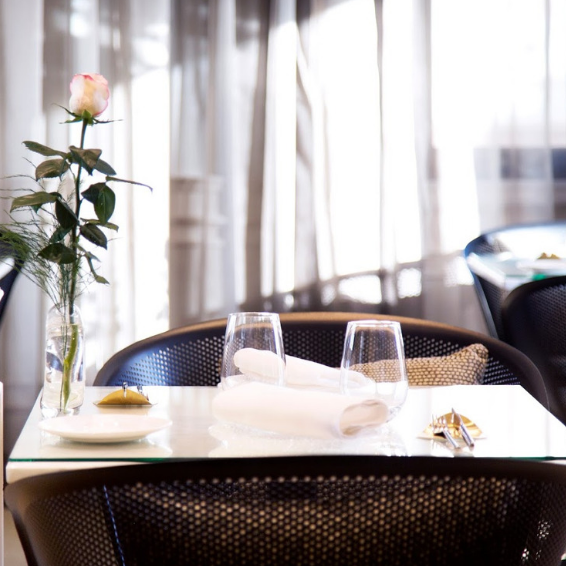How to deal with the No-Show phenomenon
If you are a restaurant owner, then you are undoubtedly already familiar with the issue of "No-Shows" and are waging a daily battle against this phenomenon.
The term “No-Show” describes a person or a party who fails to appear for a reservation or an appointment (e.g. restaurant reservation, doctor's appointment, spa treatment...). However, be careful not to confuse a cancellation with a No-Show. When a customer gives prior notice, he or she is being considerate by allowing the establishment to sell the service to another person. Unfortunately this is not the case with the inconsiderate no-show who leaves you in the lurch.
The No-Show pheomenon, a behavioral trend in the service industry.
In the last few years, this client behavior has become increasingly widespread in many different service industries including hotels, restaurants, events, airline companies, transport, health care, and even the wellness sector.
This phenomenon hugely impacts the hotel industry because if fewer numbers of customers who have booked by phone and without a deposit show up, this means that some of them are not honoring bookings for multi-night stays. Professionals in the sector estimate that in 2018, No-Shows will account for losses in sales revenue between 5% and 20%* depending on the type of service industry.
What type of customers do not show up to restaurants and why?
Contrary to the popular belief that bookings and appointments made online, particularly through mobile apps, are the main reason for the increase in No-Shows, we have discovered that the root of this problem is much more complex. In fact, 67% of customers questioned stated that the booking method has no impact on whether or not they honor a reservation.
We also interviewed our partner restaurant owners to determine the main reasons why customers fail to show.
After polling our customers, we were able to identify 6 different types of people who admit to having been no-shows at one time or another. Here are their profiles.
 The absent-minded no-show: he completely forgot about the reservation and suddenly remembers at midnight when he is half asleep on the couch in his pajamas, or the next day or even the day after that. There is a simple solution to help this customer: a text message or email reminder is an easy way to change a no-show into an actual customer.
The absent-minded no-show: he completely forgot about the reservation and suddenly remembers at midnight when he is half asleep on the couch in his pajamas, or the next day or even the day after that. There is a simple solution to help this customer: a text message or email reminder is an easy way to change a no-show into an actual customer.
 The unlucky no-show: He was really looking forward to going to the restaurant this evening but from the time he got up this morning, everything has been going wrong: late transportation, a personal problem, an urgent medical appointment. In other words, misfortune has prevented him from keeping his reservation. We totally understand this customer's situation because one never knows what life can throw at us. In this case, being able to cancel with just one click is the best solution.
The unlucky no-show: He was really looking forward to going to the restaurant this evening but from the time he got up this morning, everything has been going wrong: late transportation, a personal problem, an urgent medical appointment. In other words, misfortune has prevented him from keeping his reservation. We totally understand this customer's situation because one never knows what life can throw at us. In this case, being able to cancel with just one click is the best solution.
 The inept no-show : He couldn't cancel his reservation because he didn't know how to do it or he forgot the restaurant's telephone number. For this type of customer, TheFork provides a quick and easy cancellation system. With just 3 clicks, he can cancel his reservation and allow our restaurant owners to quickly reassign the table to new customers.
The inept no-show : He couldn't cancel his reservation because he didn't know how to do it or he forgot the restaurant's telephone number. For this type of customer, TheFork provides a quick and easy cancellation system. With just 3 clicks, he can cancel his reservation and allow our restaurant owners to quickly reassign the table to new customers.
 The shy no-show : he has a reservation but can't make it and doesn't dare call the restaurant to cancel for fear of disturbing the staff or being reprimanded. For this customer the solution is very simple: he can use the app to cancel the reservation with no fuss.
The shy no-show : he has a reservation but can't make it and doesn't dare call the restaurant to cancel for fear of disturbing the staff or being reprimanded. For this customer the solution is very simple: he can use the app to cancel the reservation with no fuss.
 The no-show who doesn't want to commit: he made the reservation, marked it on the calendar, but as the date approaches, he's not sure anymore, he becomes anxious, agonizes over his decision and then doesn't show up. For this customer, a solution that would work well would be to ask for credit card details at the time of reservation. This technique generally cures commitment phobics who would prefer to face their fears rather than pay a cancellation fee.
The no-show who doesn't want to commit: he made the reservation, marked it on the calendar, but as the date approaches, he's not sure anymore, he becomes anxious, agonizes over his decision and then doesn't show up. For this customer, a solution that would work well would be to ask for credit card details at the time of reservation. This technique generally cures commitment phobics who would prefer to face their fears rather than pay a cancellation fee.
 The rude no-show : he is well aware of the fact that he has made a reservation, but has intentionally decided not to show up. Unfortunately, there is not much that can be done about this type of customer because his behavior demonstrates a lack of consideration and bad manners.
The rude no-show : he is well aware of the fact that he has made a reservation, but has intentionally decided not to show up. Unfortunately, there is not much that can be done about this type of customer because his behavior demonstrates a lack of consideration and bad manners.
What are the consequences that no-shows can have on your business?
To counteract this phenomenon which can drastically affect a restaurant's performance and seriously ruffle the nerves of restaurant managers and dining room staff, TheFork developed a powerful action plan in 2016 called "Go or Cancel" and which produced the following results:

In fact, methods credit card details reservations, a customer reliability meter or even reservation reminders have proven to be effective strategies for reducing the number of No-Shows.
Discover all the solutions offered by TheFork to help you fight No-Shows.
If you are a restaurant owner and would like TheFork to help you in your fight against No-Shows, please do not hesitate to contact us.















